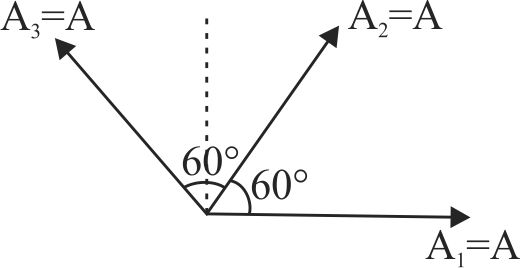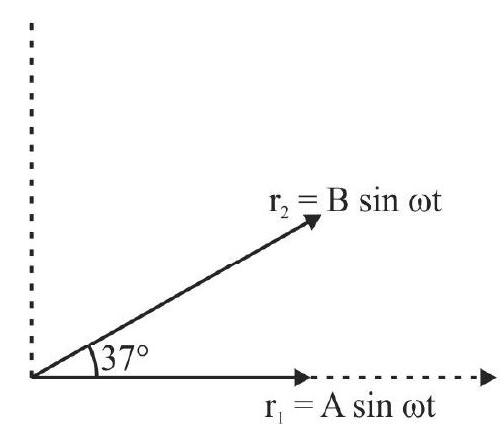364511 Three simple harmonic motions, of equal amplitudes \(A\) and equal time periods, along the same line combine. The phase of the second motion is \(60^{\circ}\) ahead of the first and phase of the third motion is \(60^{\circ}\) ahead of the second. The amplitude of resultant motion is ____.
364511 Three simple harmonic motions, of equal amplitudes \(A\) and equal time periods, along the same line combine. The phase of the second motion is \(60^{\circ}\) ahead of the first and phase of the third motion is \(60^{\circ}\) ahead of the second. The amplitude of resultant motion is ____.
364511 Three simple harmonic motions, of equal amplitudes \(A\) and equal time periods, along the same line combine. The phase of the second motion is \(60^{\circ}\) ahead of the first and phase of the third motion is \(60^{\circ}\) ahead of the second. The amplitude of resultant motion is ____.
364511 Three simple harmonic motions, of equal amplitudes \(A\) and equal time periods, along the same line combine. The phase of the second motion is \(60^{\circ}\) ahead of the first and phase of the third motion is \(60^{\circ}\) ahead of the second. The amplitude of resultant motion is ____.
364511 Three simple harmonic motions, of equal amplitudes \(A\) and equal time periods, along the same line combine. The phase of the second motion is \(60^{\circ}\) ahead of the first and phase of the third motion is \(60^{\circ}\) ahead of the second. The amplitude of resultant motion is ____.

